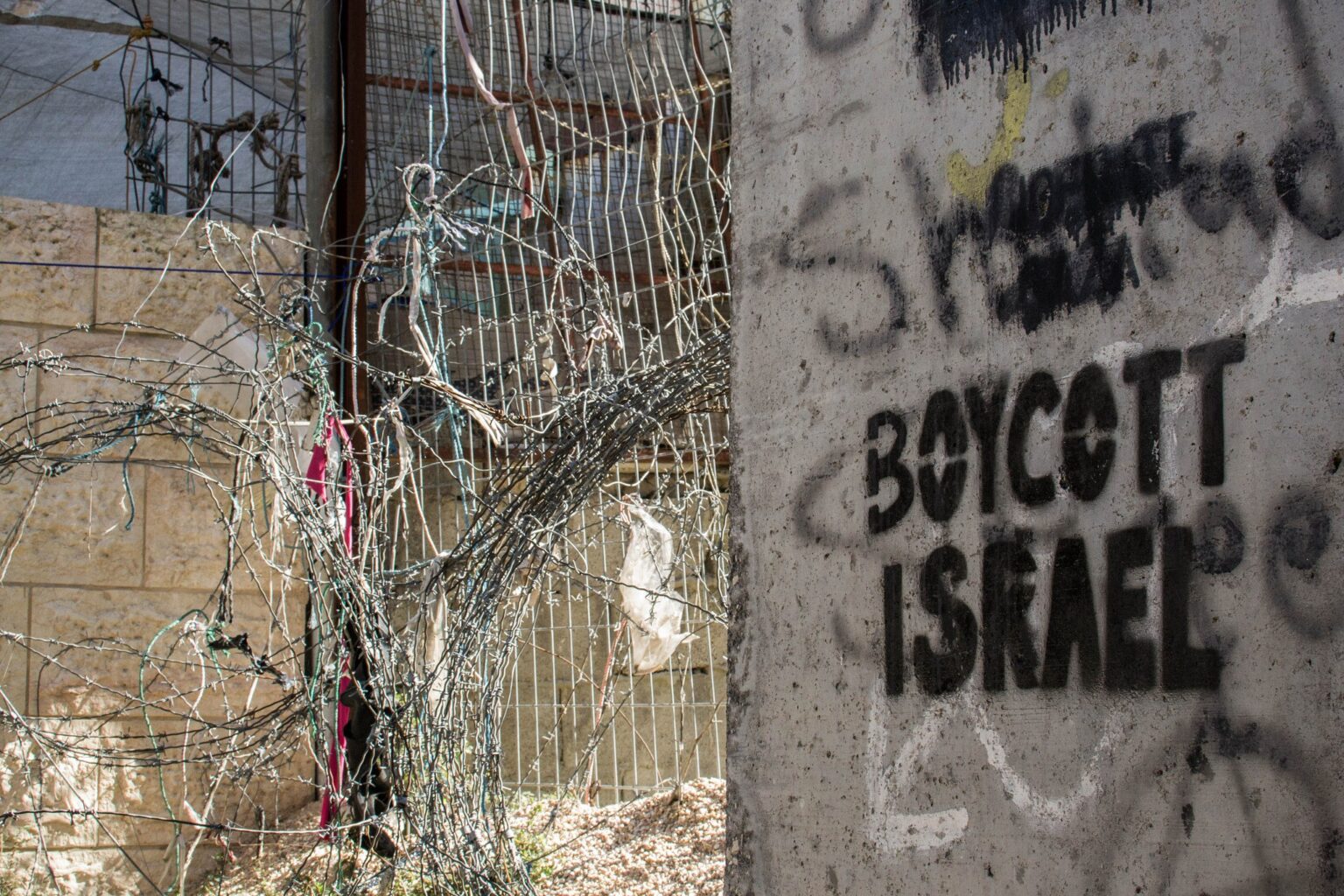In the wake of Russia’s continued invasion of Ukraine, the West has found itself in the throes of an uncharacteristic fit of solidarity, largely taking the form of fanatical consumerist and cultural boycotts of any and all things Russian—from cats to vodka to Russian Samovar. While it is certainly refreshing to see Westerners shaken up by war for a change, hypocrisy abounds. Where is all of this outrage when Saudi Arabia bombs and starves Yemen, when the U.S. and its NATO allies bomb Libya or better yet, another European nation, or when Israel launches yet another attack against Palestinians in occupied territory?
Of course the answer is simple: American leaders and their media lapdogs do not stoke outrage at imperialistic acts they commit or support. The double standard is so clear even Politico had something to say about it. Besides having another instance to scoff at mainstream liberalism in America, we are also being given a prime opportunity to examine the legacy of cultural and consumer boycotts and similar forms of resistance on the left, their utility (or futility) in the context of geopolitics, and more broadly, as a tactic for contemporary political organization.
Boycotts have a long tradition of effective political mobilization throughout the capitalist era. In the early 20th century, they became a mainstay of black liberation movements through figures like W.E.B. DuBois, Ella Baker, Rosa Parks, and most consequently, during the Montgomery bus boycotts against the Jim Crow laws in the American south. Following their success, boycotts migrated across the Atlantic to the struggle against South African apartheid, largely by way of exiles in London. When the United Kingdom and other Western countries refused to abide by a 1962 United Nations resolution imposing sanctions and consumer boycotts against apartheid, the movement backstopped onto cultural boycotts as a way to rally Western countries where populations were sympathetic but governments less so.
The boycotts that BDS supports at this stage almost fully rely on moralizing to outsiders about the need to politicize their consumer choices.
Though freed from chattel slavery, black southerners in the early 20th century were highly disenfranchised politically, socially, and economically. One of the few ways they found they could exercise agency was through economic consumption. As consumers, civil rights activists saw how black Americans could wield power over capital and the systems that depended upon their ongoing oppression. They began to organize through collectives where these choices were directly impactful. Campaigns like “Don’t Shop Where You Can’t Work” and sit-ins were the catalysts that pressured southern states and companies to repeal the legal codes legitimizing racial stratification.
The Anti-Apartheid Movement (AAM) against South Africa, which began formally in 1959 through consumer boycotts, was the next landmark iteration of the boycott tradition. Where the American civil rights activists focused on localized movements, the AAM sought change through international pressure, or rather, “isolation.” This strategy incorporated divestment, sanctions, and boycotts to target private and government institutions. The decision to culturally isolate the country was initially made when Western states balked at implementing the sanction program resolved by a United Nations committee formed by developing countries who did not have the power necessary to influence major capital redirection in the global economy. Although cultural boycotts against South Africa are often credited with leading to the repeal of apartheid, the reality is that the AAM was also waging substantial divestment campaigns, incorporating international civil society organizations into the effort and lobbying in favor of economic policies such as local municipal bans on lending and pressuring banks to restructure loan repayment schedules.
We pivot now to Israel, where the struggle against what the international left commonly refers to as “apartheid” is being waged. The Boycott, Divestment, Sanctions (BDS) movement has become one of the most popular solidaristic movements for the Palestinian cause. Modeled after the AAM, BDS aims to put international pressure on Israel to retreat from the Occupied Palestinian Territory and implement a threefold plan intended to end the now 55 year-old occupation and remedy the farcical and stale “peace process” once and for all.
However, unlike the AAM, and even the manic call for Russian boycotts today, BDS lacks mainstream and active support from most US lawmakers, corporations, and voters, and is in fact regularly targeted by laws attempting to restrict it. Much of this is due to successful propaganda campaigns that paint BDS and its activists as anti-semitic for threatening Israel’s claim on Jewish ethnocracy. While these detractors deserve no credit, BDS has arguably applied a haphazard and vulgar materialist conception of culture that pits populations against each other.
In evolving beyond its consumerist origins into the largely immaterial cultural space, boycott guidelines have often been vague and capricious. The Palestinian Campaign for the Academic and Cultural Boycott of Israel (PACBI) wing of BDS introduces their guidelines by positioning themselves in support of “freedom of expression,” stating that “mere affiliation of Israeli cultural workers to an Israeli cultural institution is…not grounds for applying the boycott” and that such cultural boycotts should never be applied on the basis of identity. However, they go on to say that “as a general overriding rule, Israeli cultural institutions are complicit…[and] must be boycotted.” It’s no stretch to imagine how difficult it might be for an Israeli artist to avoid all associations with Israeli cultural institutions, and even if it were possible, boycotters have found ways to venerate certain venues where creatives may perform or show their work even if they have no official institutional ties.
PACBI’s overriding goal is to boycott and/or cancel “events, activities, agreements, or projects involving Israel, its lobby groups or its cultural institutions, or that otherwise promote the normalization of Israel in the global cultural sphere, whitewash Israel’s violations of international law and Palestinian rights, or violate the BDS guidelines.” The clauses “involving Israel” and “promote the normalization of Israel” are vague enough to justify all manners of informal cultural embargoes—not just within Israel but beyond its borders. As such, in the discursive space, BDS controversies play out in a similar way every time: a cultural event is announced, certain factions on social media are activated to apply pressure to cancel the event, and the campaign either succeeds or fails in its attempts. If a campaign fails and the event is held, nothing politically changes. If the campaign succeeds and the event is canceled, nothing politically changes, either. Such desultory applications should raise questions by activists who want a serious and successful campaign. Hazy guidelines, unrigorous intellectual justifications, and fervent social media campaigns against cultural producers—regardless of content, type, or origin of work—have eclipsed the more formal and systematic boycotts, like those once waged by the AAM and even the civil rights movement. Impassioned culture war may be effective for corralling social justice support for the BDS movement, but that support is comparatively shallow and short-lived, and rarely accomplishes anything political.
By focusing on the fact that Israeli institutions have regularly used cultural mechanisms to interpellate Zionism (are there any states which have not done the same for their own ideological mission?), BDS has effectively reduced all of Israeli culture—and more problematically, any expressions of culture enjoyed by the Israeli people—as being itself the justification for continued wrongdoing against Palestinians. This is a sympathetic view to hold on the anti-colonial left, and in a time when production firms in former anglophone colonies regularly perform indigenous land acknowledgments before rolling opening credits, it may not even be an unpopular one. But by repeatedly emphasizing the ideological connotations of every facet of culture, this focus can become an obsessive preoccupation. Words like “artwash” and “sportswash” are common phrases on BDS’s website. Therapeutic language even makes the occasional appearance, with one alert characterizing a film festival’s partnership with Israel as “toxic” and another accusing Israel of “colonial gaslighting.” Hyper-personalized spin on what is actually a structural system of oppression encourages the notion that war is being made on individuals of a certain identity. This allows the Zionist regime to more easily steer its citizens inward, reinforcing the imperative to control and “protect” itself from outsiders.
It is true that BDS is at a disadvantage in that, unlike with both the AAM and American civil rights movement, there are no explicit laws against national or ethnic commingling between Jews and Palestinians. And even if formal Zionist processes such as “Judaization”—the political and demographic project of cleansing Christian and Muslim influence from certain parts of Israel in favor of its Jewish character—are indeed prejudiced against Palestinians, there are still few coded forms of ethnic segregation. Zionism, as an ideological project, has also been able to use the two-state solution as a Westphalian nationalist shield against comparisons to previous racial struggles. As such, BDS activists have often been proponents of the “right of the return” statute for displaced Palestinians and have gone so far as to officially name it as one of their three demands. Of course this would effectively lead to the end of the state of Israel as the explicitly ethnonationalist project it was originally conceived to be in favor of a unified, binational state, as these activists are undoubtedly aware. However, it is difficult to imagine how the institutions, infrastructure, culture, laws, and so on of these two populations could be not just reconciled, but resolved into a new and just state-building project divorced from both Zionism and Palestinian nationalism from a strategy of mutual cultural isolation.
The boycotts that BDS supports at this stage almost fully rely on moralizing to outsiders about the need to politicize their consumer choices. While intended to be an act of solidarity, adherence to cultural boycotts resembles what has been described by some as “folk politics” and by others as the hyper-politics of voluntarism. Unable to scale up or exist outside of a paradigm of reaction and response, these tactics end up doing more to retain social atomization than providing any sort of emancipatory path forward.
Proponents of cultural boycotts believe that by allowing artists, musicians, and academics to have their work and ideas consumed by people in the target country they are by proxy helping to legitimize an “abnormal” regime, or at least, a regime’s “abnormal” behavior. Creatives then act as bestowers of cultural legitimacy for political regimes, or what they call “soft power.” Russia and Israel’s “hard power,” however, is unfortunately not directly addressed through cultural boycotts. Rarely does such action address the extensive network of capital and political alliances between the US and Israeli industries and the state, and in the case of Russia, it is preferable to blame rising gas prices on Moscow alone. All of this softens the public appetite for examining these alliances any closer. In any case, neither Israel nor Russia are in any danger of losing their right to rule and are in fact two of the most powerful and active players on the world stage today, with nuclear arsenals to boot.
The cultural boycott movement fundamentally rests on the belief that the international community is a cohesive unit dedicated to the project of liberalism. If Israeli citizens are meant to be inspired to overthrow their rulers by these acts of cultural isolation alone, they would have to value acceptance into that international family of liberal democratic nations over all else. But the reality is that this supposed international community is an increasingly divided landscape marred by populist splinters, faltering globalization, and drastic rightward turns even in the most liberal democracies. These “culture war” battles serve as a replacement for more substantive politics and illustrate how fractured these communities really are, and how far from our imaginations substantial political change is.
If activists truly seek to delegitimize the power of its regime, they will need to reach beyond the “soft” power of the regime’s citizens and culture to politically weaken its formal institutions without isolating its citizens in order to bring them into the fold of resolution in a more internationalist tradition.









